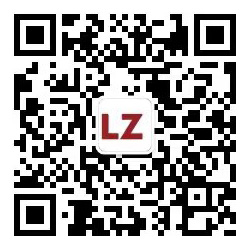美国专利法现有技术例外(一)
笔者在工作中处理过多个美国专利无效项目,其中对比文件的选择是无效检索中很重要的一环,尤其要注意对比文件是否会成为潜在的美国现有技术的例外,这关乎到整个无效能否顺利进行。除了美国专利无效程序,在申请美国专利时,对于审查员作出的现有技术驳回决定,使用现有技术的例外也是有效的救济途径之一。
01现有技术的范畴
《美国发明法案》(AIA)第102条为新颖性条款,于2013年3月16日生效,其中关于现有技术的定义在35 U.S.C. 102 (a):
AIA 35 U.S.C. 102 (a) NOVELTY; PRIOR ART. —A person shall be entitled to a patent unless—
(1) the claimed invention was patented, described in a printed publication, or in public use, on sale, or otherwise available to the public before the effective filing date of the claimed invention; or
(2) the claimed invention was described in a patent issued under section 151, or in an application for patent published or deemed published under section 122(b), in which the patent or application, as the case may be, names another inventor and was effectively filed before the effective filing date of the claimed invention.
102 (a) (1)是从公开日期的角度限定现有技术,即现有技术的公开日应在要求保护的发明的有效申请日之前。此条款中现有技术包括已授权的专利,印刷出版物,公开使用、出售或以其他方式可被公众获得的技术。
102 (a) (2)是从申请日期的角度限定了3种特定类型的现有技术,即3种特定类型的现有技术的申请日应在要求保护的发明的有效申请日之前。该3种特定类型的现有技术分别为美国授权专利(section 151)、美国专利申请公布和指定美国的PCT申请公布(section 122 (b)),并且要求上述3种专利或专利申请中署名有另一发明人。
02现有技术的例外
35 U.S.C. 102 (a)解释了何为现有技术,但并不是所有满足35 U.S.C. 102 (a)条件的技术都是现有技术,在美国专利法中存在现有技术的例外,具体见35 U.S.C. 102 (b):
AIA 35 U.S.C. 102 (b) EXCEPTIONS.—
(1) DISCLOSURES MADE 1 YEAR OR LESS BEFORE THE EFFECTIVE FILING DATE OF THE CLAIMED INVENTION. —A disclosure made 1 year or less before the effective filing date of a claimed invention shall not be prior art to the claimed invention under subsection (a)(1) if—
(A) the disclosure was made by the inventor or joint inventor or by another who obtained the subject matter disclosed directly or indirectly from the inventor or a joint inventor; or
(B) the subject matter disclosed had, before such disclosure, been publicly disclosed by the inventor or a joint inventor or another who obtained the subject matter disclosed directly or indirectly from the inventor or a joint inventor.
(2) DISCLOSURES APPEARING IN APPLICATIONS AND PATENTS. —A disclosure shall not be prior art to a claimed invention under subsection (a)(2) if—
(A) the subject matter disclosed was obtained directly or indirectly from the inventor or a joint inventor;
(B) the subject matter disclosed had, before such subject matter was effectively filed under subsection (a)(2), been publicly disclosed by the inventor or a joint inventor or another who obtained the subject matter disclosed directly or indirectly from the inventor or a joint inventor; or
(C) the subject matter disclosed and the claimed invention, not later than the effective filing date of the claimed invention, were owned by the same person or subject to an obligation of assignment to the same person.
上述法条中,102 (b) (1)是针对102 (a) (1)提出的现有技术例外,102 (b) (2)是针对102 (a) (2)提出的现有技术例外。这期主要聊聊102 (b) (1) (A)规定的现有技术的例外。
35 U.S.C. 102 (b) (1)中对于现有技术的例外提出了一个重要的宽限期,即是在要求保护的发明的有效申请日之前1年内作出的披露。根据102 (b) (1) (A)的规定,该披露是由发明人或共同发明人作出的、或是由其他人直接或间接的从发明人或共同发明人处获得披露的标的物所作出的。
在美国专利审查程序手册(MPEP,Manual of Patent Examining Procedure)的2153.01 (a)部分对35 U.S.C. 102 (b) (1) (A)作出了详细解释:
A disclosure is not prior art under AIA 35 U.S.C. 102(a)(1) if it is apparent from the disclosure itself that it is an inventor-originated disclosure. Specifically, Office personnel may not apply a disclosure as prior art under AIA 35 U.S.C. 102(a)(1) if the disclosure: (1) was made one year or less before the effective filing date of the claimed invention; (2) names the inventor or a joint inventor as an author or an inventor; and (3) does not name additional persons as authors on a printed publication or joint inventors on a patent. This means that in circumstances where an application names additional persons as joint inventors relative to the persons named as authors in the publication (e.g., the application names as joint inventors A, B, and C, and the publication names as authors A and B), and the publication is one year or less before the effective filing date, it is apparent that the disclosure is a grace period inventor disclosure, and the publication is not prior art under AIA 35 U.S.C. 102(a)(1). If, however, the application names fewer joint inventors than a publication (e.g., the application names as joint inventors A and B, and the publication names as authors A, B and C), it would not be readily apparent from the publication that it is an inventor-originated disclosure and the publication would be treated as prior art under AIA 35 U.S.C. 102(a)(1) unless there is evidence of record that an exception under AIA 35 U.S.C. 102(b)(1) applies.
根据上述MPEP § 2153.01 (a)的解释,如果某个披露满足条件:(1)在1年宽限期内作出的;(2)将发明人或共同发明人命名为作者或发明人;(3)没有将其他人指定为印刷出版物的作者、或专利的共同发明人;则该披露不能作为35 U.S.C. 102 (a) (1)规定的现有技术来使用,即属于现有技术的例外。
从上述解释中,可以总结出以下内容:若出版物的公开日在1年的宽限期内,且该出版物的作者为要求保护的发明的发明人的子集,则该出版物为现有技术的例外,不能作为35 U.S.C. 102 (a) (1)规定的现有技术来使用。
03发明人宣誓书或声明机制
根据上述结论,若出版物的作者是要求保护的发明的发明人之外的人,则该出版物属于现有技术的范畴,但凡事均有例外,在某些特定情况下,即使出版物的作者不是要求保护的发明的发明人的子集,该出版物也有可能属于现有技术的例外。在MPEP § 2153.01 (a)中还提出了一种提交宣誓书或声明的机制(37 CFR 1.130),该机制就属于上述特定情况,即申请人可根据37 CFR 1.130 (a)提交宣誓书或声明的方式确定AIA 35 U.S.C.102 (b) (1) (A)规定的例外仍然适用。
MPEP § 2155.01规定了如何使用宣誓书或声明以克服现有技术的驳回,并给出了以下几个例子来帮助我们进一步了解该规定。
Example 1
2021年4月7日,AB公司提交了一份美国非临时专利申请,要求保护主题X。Anwesha为发明人,但根据37 CFR 1.63的记录没有提交发明人的宣誓或声明。审查员发现了一篇公开主题X的期刊文章,发表日期为2020年11月1日,期刊文章将Anwesha和Bob列为共同作者。审查员使用该期刊文章根据35 U.S.C.102 (a) (1)驳回了主张主题X的权利要求。作为对上述现有技术驳回的回应,AB公司根据37 CFR 1.130 (a)提交了一份由Anwesha签署的声明,声称她是该期刊文章披露的主题X的唯一发明人。Anwesha还在声明中解释说,Bob是一名研究生,在她的指导和监督下工作,对所要求保护的发明主题没有贡献。
Anwesha的声明既包括Anwesha发明了X的声明,还包括了对Bob参与期刊文章的合理解释。审查员应撤回驳回决定,因为上述声明确定了期刊文章不是现有技术。
Example 2
AB公司于2021年6月2日提交了一份美国专利申请,披露并要求保护主题Y。Alexis是发明人,但没有根据37 CFR 1.63提交发明人宣誓或声明。审查员发现一份于2021年1月14日公开的美国专利申请(PGPUB),要求保护主题Y和Z,PGPUB将Alexis和Mehdi列为共同发明人。审查员使用PGPUB根据35 U.S.C.102 (a) (1)(基于其公布日期)和35 U.S.C.102 (a) (2)(基于其有效提交日期)驳回了主张主题Y的权利要求。
作为对上述现有技术驳回的回应,AB公司提交了一份由Alexis签署的37 CFR 1.130 (a)声明,声称Alexis发明了PGPUB中披露的主题Y。审查员应维持根据35 U.S.C.102 (a) (1)和102 (a) (2)作出的驳回,因为该声明未能证明Mehdi不是Y的共同发明人。即Alexis的声明是无效的,因为它缺乏对Mehdi在PGPUB中角色的合理解释。如果Alexis的声明指出,Mehdi被署名为PGPUB的发明者是因为Mehdi发明了Z,那么该声明就足以。
Example 3
2021年3月16日,Acme公司提交了一份美国专利申请,要求保护主题X。由Ali根据37 CFR 1.63签署的发明人宣誓或声明与该申请一起提交。审查员发现于2020年11月10日公开的Gopal的美国专利申请,该专利申请披露但未要求保护主题X。审查员根据35 U.S.C.102 (a) (1)和35 U.S.C.102 (a) (2)对Acme公司的专利申请作出了驳回决定。
作为回应,Acme公司提交了一份由Gopal签署的37 CFR 1.130 (a)声明,声称Ali告诉了他关于Gopal专利申请中披露的主题X。审查员应撤回根据35 U.S.C.102 (a) (1)和102 (a) (2)作出的驳回决定,因为记录证据证明Gopal专利申请中X的披露可归因于Ali。换句话说,有证据表明Ali发明了X,而Gopal的披露源于Ali。
通过上述例子可知,当复审中的专利申请或专利的权利要求被驳回时,申请人或专利权人可以提交一份适当的宣誓书或声明,通过证明该披露是由发明人或共同发明人作出的,或者所披露的主题是直接或间接从发明人或共同发明人处获得的,从而将该披露排除在现有技术之外。该份宣誓书或声明要重点写明谁发明了要保护的主题,以及对出现的其他人作出合理解释。
04建议
在实务工作中,最容易成为现有技术例外的对比文件,大多是同一家公司、院校或科研机构的专利或非专利文献。对于这类对比文件的使用要保持谨慎,毕竟专利权人后续可根据37 CFR 1.130 (a)提交宣誓书或声明来作为回应。至于这份宣誓书或声明能否得到官方的认同,或者这份宣誓书或声明的其他可操作性,在前期准备阶段我们无法知晓。
鉴于篇幅有限,笔者将分多期来介绍美国专利法现有技术的例外,下期我们接着聊美国专利法现有技术例外(二),关于AIA 35 U.S.C. 102 (b) (1) (B)规定的现有技术的例外。
本文作者

